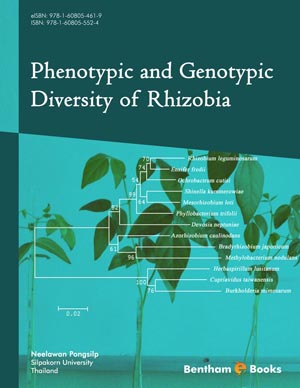Abstract
Rhizobia are composed of specific groups of bacteria that have the ability to induce symbiotic nitrogen-fixing nodules on the roots or stems of leguminous plants. Rhizobia are of enormous agricultural and economic values because they provide the major source of nitrogen input in agricultural soils. The classification of rhizobia is becoming increasingly complex and is revised periodically because of new findings that propose new genera and new species. Up to the present time, rhizobia are distributed in 17 genera including Azorhizobium, Bradyrhizobium, Burkholderia, Cupriavidus, Devosia, Ensifer, Herbaspirillum, Mesorhizobium, Methylobacterium, Microvirga, Ochrobactrum, Phyllobacterium, Pseudomonas, Ralstonia, Rhizobium, Shinella and Sinorhizobium. Rhizobial diversity has been revealed by several methodologies, providing valuable information about bacterial genotypes that are well adapted to a certain environment.
Keywords: Biological nitrogen fixation (BNF), Classification, Host specificity, Non-symbiotic rhizobia, Rhizobia, Rhizobial diversity, Symbiosis, Symbiotic gene, Symbiotic promiscuity, Taxonomy.






















